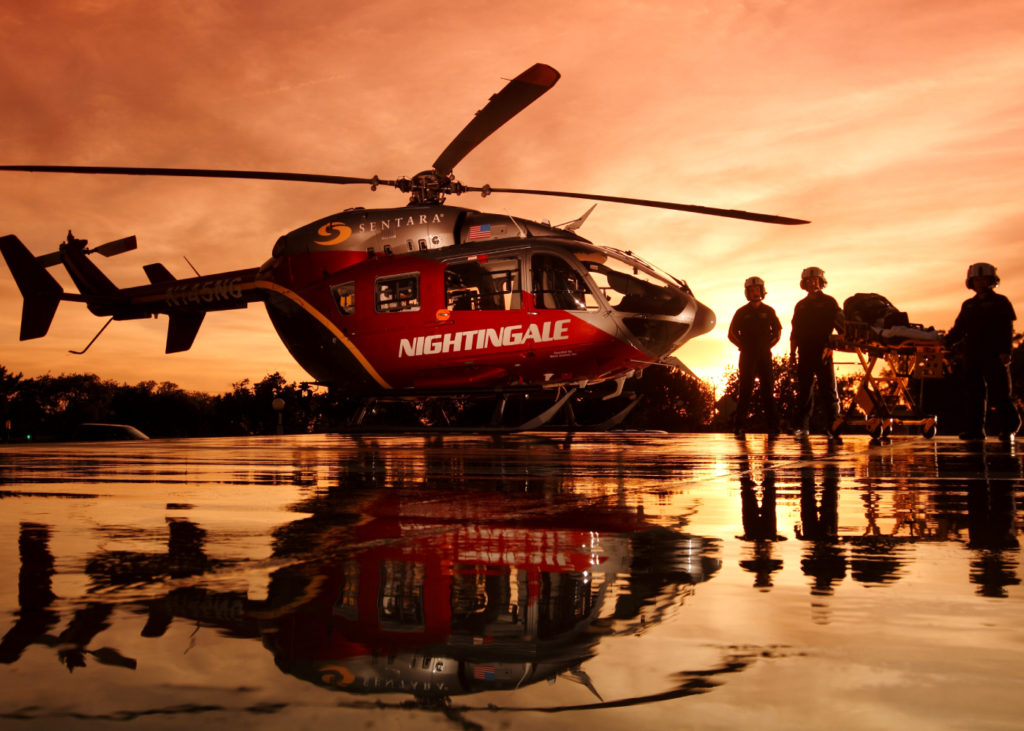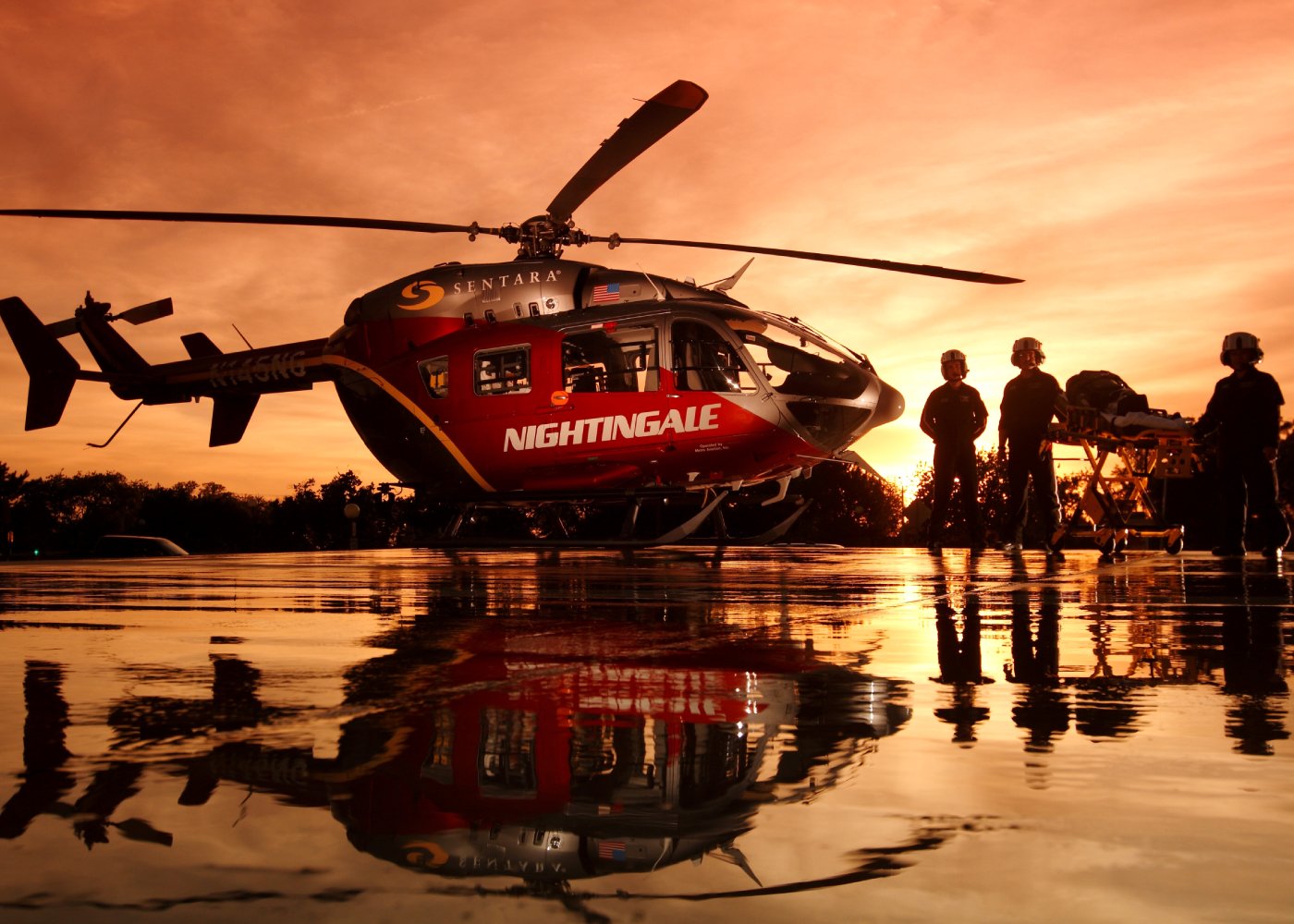For 40 years, the air medical crew at Nightingale Regional Air Ambulance has been playing a critical role for the community of Norfolk, Virginia, and its surrounding area.
As a fully functional critical care unit operated by Metro Aviation, Nightingale is tasked with the important role of transporting injured patients to Sentara Healthcare’s level one trauma center — and doing so thousands of feet above the ground.

Its experienced crew of four pilots, two mechanics, six dispatchers, seven nurses, 11 paramedics and an operational medical director have been immensely successful. Not only is the unit celebrating its 40th anniversary this year, but the team has carried out around 25,000 accident-free flight requests over the last four decades.
But on March 13, 2021, the air medical crew on duty that night experienced an incident that almost cast a shadow over the unit’s perfect safety record.
Joe Sherman, a pilot with Metro Aviation, provided a detailed first-person account of the incident to a full room of air medical personnel at AMTC22 Elevated in Tampa, Florida, in October.
That evening at around 8 p.m., an air medical team with nearly a century of combined experience — a flight nurse with 28 years, a flight paramedic with 29, and Sherman himself with 38 — climbed into the EC145 Nightingale helicopter.
The crew was to complete an air ambulance flight request from Sentara Norfolk General Hospital, where Nightingale is based, to a landing zone (LZ) at a school in Suffolk, Virginia. It was a short 18-mile trip that should have been a routine call that night.
After reviewing the LZ report that evening, Sherman called it “stellar,” which gave the team even more confidence that the transport would be carried out with ease.
“Although we felt like we got good information from the LZ controller, we still do a reconnaissance, to confirm what we’ve been told and what we can expect to see,” Sherman said.
A video recording of the cockpit that night showed Sherman providing a rundown of what he saw on his descent, with the rest of the crew confirming Sherman’s sightings.
Everything appeared to be all clear for a smooth landing — until they reached about 10 feet (three meters) from the ground.
“All of a sudden there was a wire flapping in front of us. We’re all wearing NVGs [night vision goggles], but nobody saw it until it started flapping in the wind caused by the rotor wash,” Sherman said. “It was that up-and-down motion that caught my eye. Otherwise, I probably wouldn’t have seen it.”
Barely detectable with NVGs, the wire was virtually invisible to the naked eye. Sherman immediately stopped his forward progress, got into a hover, and did a 90-degree pedal turn putting the wire on his right side before landing.
“At the time, Metro had a requirement that, by 300 ft [91 m] above ground level [AGL], our rate of descent must remain under 300 ft per minute. Now that rate of descent applies below 200 ft [61 m] AGL,” Sherman said.
He told the room full of air medical personnel at AMTC22 that it was this requirement that allowed Sherman to avoid hitting the wire.
Once on the ground, the medical crew carried on with the transport, picking up the patient and securing them onboard, while Sherman took a moment to document the near wire strike.
The crew completed the transport and then notified Metro Aviation and the manager on duty that night. Soon after, the team was called to carry out a second flight, which they completed before being relieved for the night to regroup from the incident.

Determining what went wrong
The next morning, the team conducted a full debriefing with the fire department, LZ commander, ground crew, flight crew, and Nightingale administration — walking through the entire scene to determine what went wrong.
“We’ve landed at that school a few times, but most of the time, we land in the baseball field or a grassy area in front of the school,” said Scott McClain, flight team coordinator at Nightingale. “For some reason that night, the battalion chief recommended to the LZ controller that they use the parking lot instead. Apparently, the baseball fields had some new light poles put up that were taller than what they used to be.”
While the new light poles in the baseball field were easy to spot, a new wire hanging across the parking lot, essentially cutting across the middle of the LZ, went undetected by the ground crew on site that day.
“They basically just missed it,” McClain said. “They set up the cones in what they thought was a great spot. They looked at the surrounding area. They just didn’t look directly overhead of the LZ. It was very dark that night, and truly, they just missed it.”
But the wire was clearly visible the next morning in daylight. During the debriefing, the team discussed various issues, such as crew fatigue, training requirements, and policies and procedures. They ultimately determined that the flight crew was well-rested, wore appropriate NVGs, and had no reason not to trust the landing zone, but the ground crew lacked LZ training largely due to the pandemic.
“I spoke with the fire chief, and they went back and looked at a lot of their policies and procedures and found some gaps that they were able to tighten,” said Denise Baylous, manager and flight nurse at Nightingale.
Turning a near accident into a lesson
The near wire strike opened the door for Nightingale to team up with the Suffolk Fire Department to create a training video on how to set up an appropriate landing zone.
“The LZ controllers and everyone on the ground need to review and look at all six sides of the LZ — not only what surface we’re landing on, but look directly above the LZ, to your right, and to your left,” McClain said. “Look at all six sides and have everybody who’s on scene look around. Make sure we put as many eyes on our landing zone as possible.”
Nightingale sent the video to all the fire departments “in the hopes that moving forward, that will be a requirement for all the departments to review on an annual basis,” Baylous said.
“We wanted to be transparent, so we just put it up on social media to make certain that we shared it with the people in our line of work,” Baylous said. “Oftentimes in the medical field, we don’t share what our close calls were, and we don’t learn from each other.”
Along with social media, the team uses events like AMTC to get its message out, giving the air medical industry an important eye-opening lesson.
“We haven’t had any accidents or incidents in the 40 years that we’ve been in business, but something like this emphasizes that it can happen to even the best programs,” Sherman said. “There is no shield of armor that comes with a track record. Your history is history, and it doesn’t mean you should ever let your guard down.”





